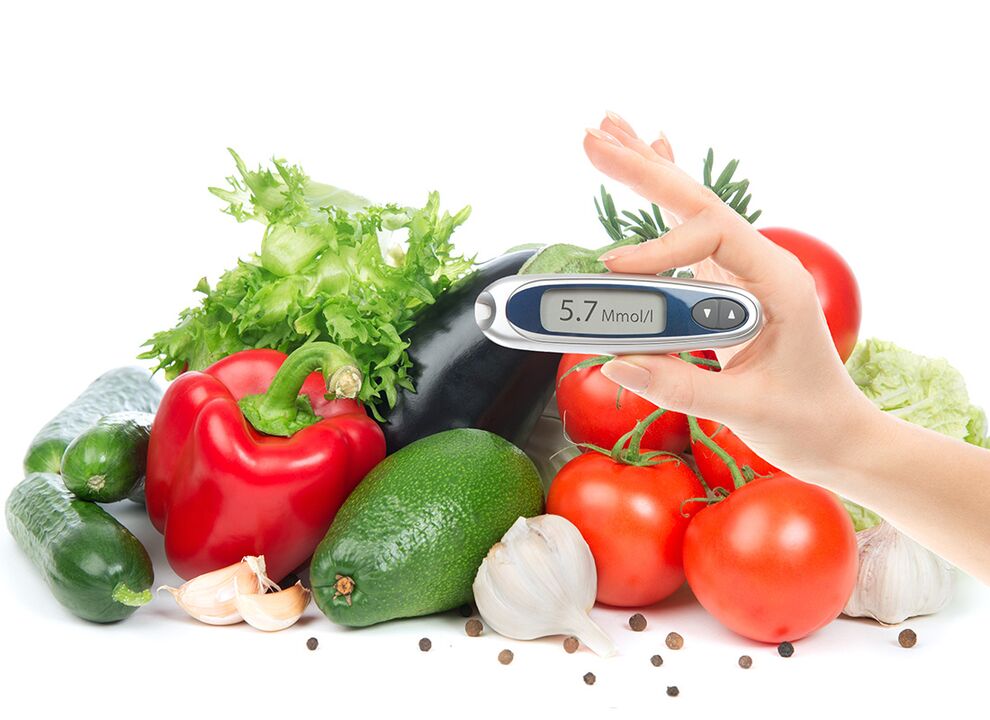
Diabetes is a lifelong disease that causes anxiety for patients, it occurs due to a complete or partial deficiency of the pancreatic hormone - insulin. Insulin is a substance that transports glucose into the cells of our body, to enrich the blood with nutrients and saturate the cells with energy.
Many people underestimate the importance of following a diabetes diet. In essence, this disease is caused by an unreasonable diet leading to a metabolic disorder. Science has proven that it is foolish to deny that a diabetic diet is one of the right ways to fight disease.
Hyperglycemia is the main pathophysiological stage in the development of diabetes mellitus, to avoid this it is necessary to follow a diet. The basis of a diabetic diet is to increase protein, reduce carbohydrates in daily meals as well as fats that are easily converted into carbohydrates and their components, causing complications and aggravation. this disease. It turns out that by following simple and clear rules of nutrition, you can return your metabolism and blood sugar levels to normal.
How to eat with diabetes
For a patient with diabetes, the question is always important - what type of dietary therapy is needed for diabetes and how effective it is. The main food products should be dairy products, vegetables and fruits. Eat enough meat. It is important to prevent the breakdown of proteins in the body and to monitor the maintenance of glycogen, the natural production process of the energy component of substances in our body. This directly depends on the daily intake of food, which is rich in protein, as well as trace elements, vitamins and minerals that saturate our body.
Importance of beans for diabetes
Beans are one of the richest sources of protein and amino acids. One that stands out is the white kidney bean. It contains a large amount of non-essential and irreplaceable amino acids that cannot be synthesized in our body, and must be obtained from food sources, which are valine, tryptophan, leucine, methionine, lysine, histidine, phenylalanine, threonine. The product contains vitamins C, B, PP, potassium, zinc, iron and phosphorus.
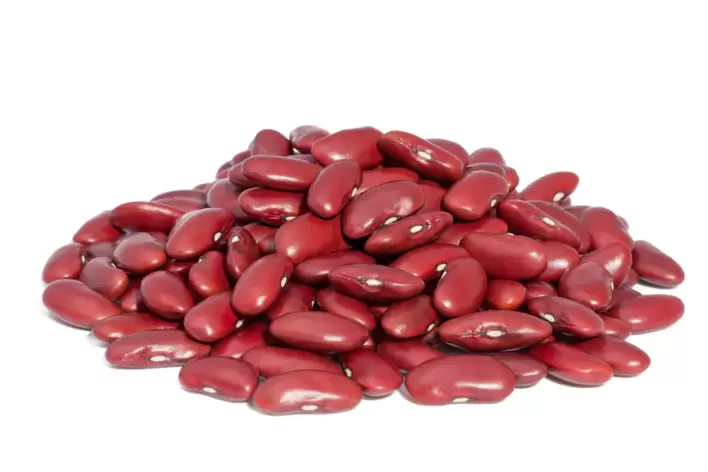
Red bean is a legit food for diabetics, rich in minerals and vitamins.
Beans contribute to the formation of gas in the intestines, which is a factor that somewhat limits the use of large amounts. However, if enzyme preparations are used with the use of beans, such undesirable properties can be avoided.
Cereals for diabetes
It should be noted that one of the important aspects when following the diet is the use of buckwheat porridge. The unique feature of this cereal is that it does not greatly affect the metabolism of carbohydrates in the body, keeps the glucose level at a stable level, does not impulsively go up compared to other foods.
In addition to buckwheat, you should add oatmeal, wheat porridge, pearl barley and corn in your diet, this will be a suitable breakfast for people with diabetes. Cereals are enriched with a wide range of vitamin and mineral components that are necessary for the proper and stable functioning of our body, and are also easy to digest. An important factor is that the grains listed above are excellent sources of adenosine triphosphate (ATP) to fuel muscle cells.
Fruits to eat for diabetes
Fruit is the main source of vitamins, minerals and fiber necessary for the normal functioning of the human body. The content of nutrients in this food group is many times higher than in any other food source. An important feature is the almost complete absence of glucose, and the predominance of fructose and sucrose in the composition.
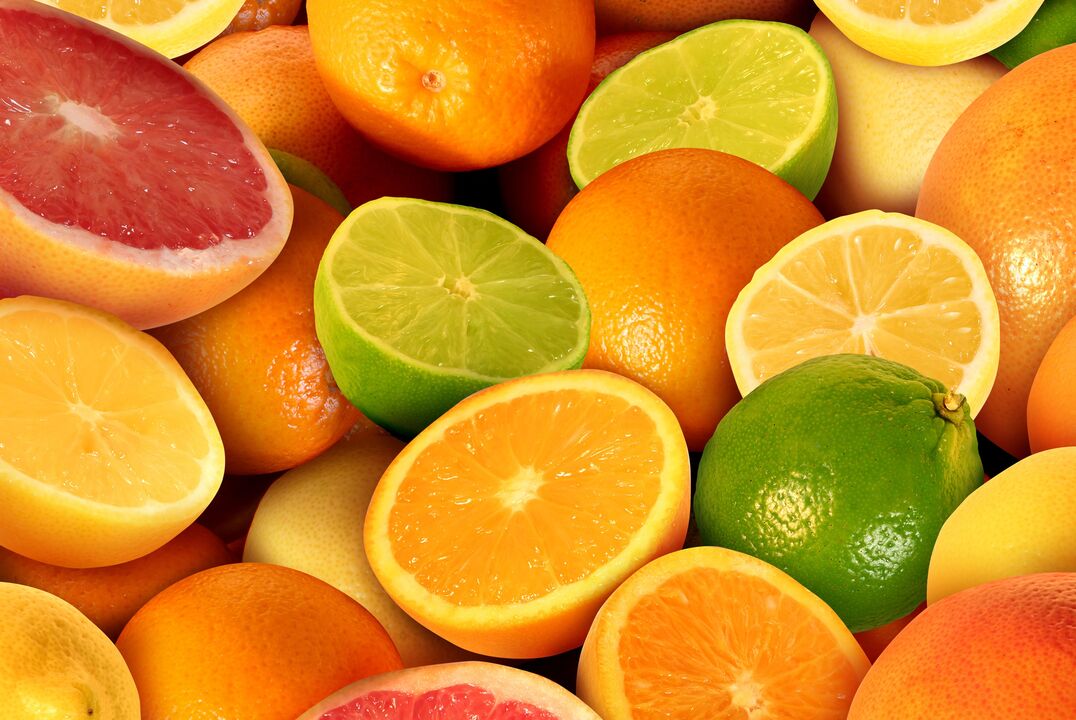
Citrus fruits are the most useful fruits for diabetics, which are characterized by a low glycemic index.
Let's take a look at what fruits and berries should be included in the diabetes diet.
From fruit:
- grenade;
- oranges;
- dried fruits (dried plums, dried apricots, dried apples);
- Pear;
- tangerine;
- grapefruit;
- nectarines;
- lemon;
- apricots;
- Apple.
From berries:
- any grapes;
- gooseberry thorns;
- black berries;
- Cherry;
- blueberry.
Watermelon and watermelon should be consumed in moderate and limited amounts, as these foods are higher in carbohydrates.
People with diabetes should pay attention to fruits such as grapefruit, lemon, tangerine for a number of reasons:
- Rich content of vitamin C. The importance of vitamin C to the human body can hardly be overestimated. Science has proven that it is important for strengthening the walls of blood vessels, as well as for the work of the enzyme system;
- One of the best qualities of citrus fruits is their low glycemic index. This is explained by the influence of the carbohydrate components in these fruits to have little effect on blood glucose levels;
- possesses powerful antioxidant capacity, inhibits the development of diabetes complications by preventing the negative effect of hyperglycemia on the cells of our body.

Fresh fruit juice. The Diabetic Diet is no excuse not to indulge yourself!
A quick note on citrus juices. Try to avoid buying juices, even natural juices, from regular stores, as they contain carbohydrates and sugars, which can lead to increased blood sugar. Your best bet is to buy fresh fruit and make juice from a real, naturally grown product.
What should not eat with diabetes?
Every diabetic should know what not to eat with diabetes. If you consume all foods without exception, without knowing their glycemic index in advance, this can lead to the progressive development of hyperglycemia with a post-hyperglycemic coma. there.
The diabetic diet should not contain prohibited foods.
Flour and bakery products:
- White bread, especially freshly baked bread;
- Any rich products;
- Cake.
Meat and seafood products:
- Smoked products;
- Rich meat broth;
- Meat of some birds (duck, geese);
- Fatty pork and beef;
- Fat fish.

With diabetes, fatty and spicy meat products will have to be eliminated in order to switch to the diet (in limited quantities).
Fruits and dried fruits are prohibited for diabetes:
- Banana;
- Grape;
- Day;
- Figs;
- Strawberry;
- Raisins.
Dairy products:
- Fat sour cream;
- Whole milk;
- Kefirs and yogurts are high in fat;
- Butter (especially homemade).
Vegetable dishes:
- Potato;
- Peas;
- Which pickled vegetables.
Other food products:
- Street;
- Candy;
- Butter Cookies;
- Juice (store);
- Any food in fast food establishments.
About the dangers and benefits of eating dates, coffee and honey for people with diabetes
It's no exaggeration to say that everyone loves these products, and it's hard to give up the little joys in life because of diabetes. So we will analyze separately whether you can use them in your diet.
honey
As they say, how many people, so many opinions. There are many articles published in various health journals and blogs about the use of honey by people with diabetes. Think logically, given that honey is high in fructose, this carbohydrate is not capable of significantly changing a person's blood glucose levels. However, we cannot ignore the fact that in order to assimilate and metabolize fructose we need insulin which, for example in type 2 diabetes, simply cannot fulfill its purpose. Consuming honey in this case will lead to an increase in blood sugar in people with diabetes, so it will not bring anything bad to a healthy person.
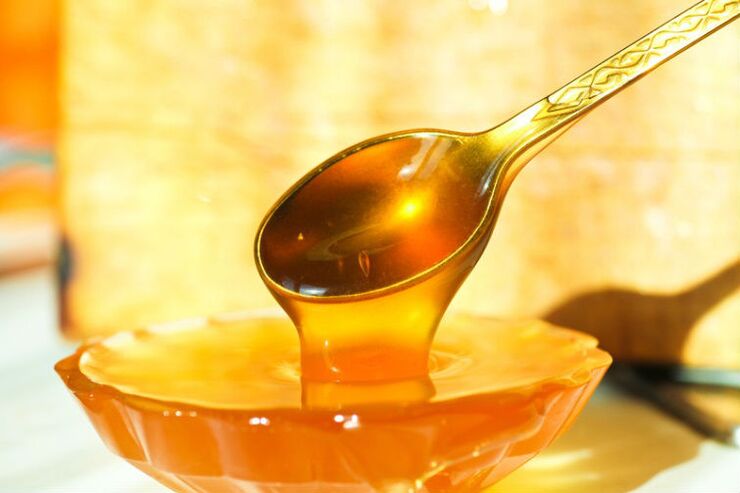
Is honey good for diabetes? There is ongoing debate, but it is unanimously accepted that 1 teaspoon on an empty stomach will not harm, but will help.
Based on these data, for patients with diabetes, the following conclusions can be drawn:
- Honey, being a useful substance for the body, should be present in the diet.
- Do not consume more than two tablespoons a day.
- For the best effect, it is best to eat a spoonful of honey on an empty stomach and drink it with a glass of water. This is due to the fact that honey is converted into glycogen, and will serve as the starting step of the process of energy generation and the synthesis of useful substances in the body, which works throughout the day. Usually, a small amount of this product is still included in the various dietary prompts for diabetes.
day
A very controversial product to include in a diabetes diet. They contain a large amount of calories and fast carbohydrates, however, they are high in potassium and vitamin A, which have the effect of causing diabetes complications.
Based on these data, we recommend:
- Diabetics in severe form of this disease are strictly forbidden to use dates.
- With a mild form of diabetes, which is corrected by adherence to the diet and hypoglycemic drugs, small amounts are allowed, provided that the daily amount does not exceed 100 grams.

Diabetics should refuse to drink coffee.
Coffee
People with severe diabetes are advised to avoid this product, regardless of the concentration of the coffee. With the moderate form of the severity of this disease, the use of a small amount of weak coffee is allowed.
Despite the fact that it practically does not affect carbohydrate metabolism, coffee activates the vasomotor center and dilates the walls of blood vessels. As a result, the vessels of the skeletal muscles, heart and kidneys dilate, increasing the activity of the cerebral arteries. Therefore, the diabetic diet does not include coffee.
Nuts and their beneficial properties
Nuts are, by no means exaggerated, just a "warmer" of beneficial properties and essential nutrients for our body. These include vitamins D-3, K, Ca, fiber and polyunsaturated fatty acids. In the fight against diabetes, nuts play an important role, directly affecting carbohydrate metabolism, lowering blood sugar levels. In addition, the use of nuts also helps to restore damaged cells of internal organs, preventing the development of complications of diabetes. Therefore, it is very important to include this product in the diet of diabetics.
Let's take a look at the effects of different nuts on sugar reduction separately.
Walnuts
We all know from childhood that this nut is brain food. A diabetic diet should include walnuts, which are one of the most important foods, because the brain lacks energy compounds due to not absorbing enough glucose into it.
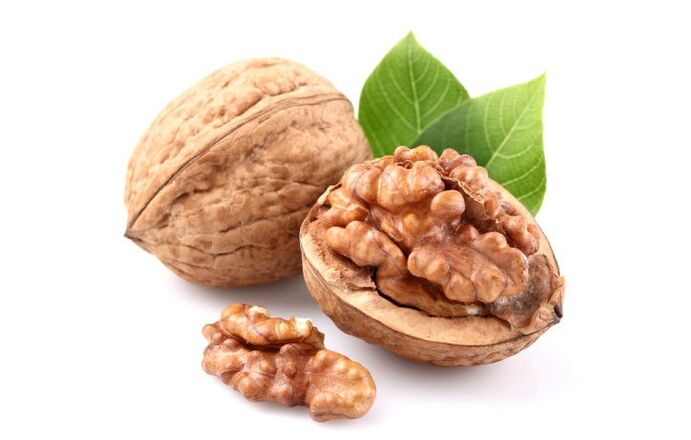
Walnuts are rich in nutrients that must be included in a diabetic's diet.
Walnuts are rich in manganese, alpha-linolenic acid and zinc. These trace elements directly affect the lowering of blood sugar. Also included in the composition of essential fatty acids inhibits the progression of vascular diseases of the internal organs and defeats atherosclerosis of the lower extremities. An important role is played by the fact that walnuts practically do not contain carbohydrates, which is a simple answer to all questions about the role of walnuts. It can be eaten with diabetes as a separate treat or as a dietary supplement.
Peanuts
This is a dietary product, especially rich in amino acids, and its protein is vegetable, so it cannot be replaced by any animal product protein. So peanuts must be included in breakfast, lunch or dinner for every day. The protein present in peanuts is quickly introduced into the body's metabolism and broken down, producing high-density glycoprotein in the liver to reduce sugar. This "expels" cholesterol from the blood vessels and breaks it down.
Almond
They have the largest amount of calcium in their composition. Almonds are highly recommended for developing diabetic osteosarcoma affecting bones and joints. Eating 10-13 almonds a day, you will provide your body with the necessary trace elements, they will have a positive effect on carbohydrate metabolism. Diet for diabetes in adults should include almonds.
Pine nuts
The pine nuts were delicious from the start. In addition, they contain large amounts of K, Ca, vitamins B and D, ascorbic acid, phosphorus and magnesium, which are essential if the goal is to eat right. Pine nuts are used to prevent microscopic diseases, inflammatory processes in the legs and ARVI in people with diabetic foot syndrome.
What you need to know about the glycemic index
The glycemic index is a measure of the effect a food has on blood sugar levels after eating it. Each product has its own glycemic index. If it is low (10-40 units), blood sugar rises slowly, if it is high (over 70 units), it increases rapidly. In this regard, every person with diabetes is simply obliged to know the glycemic index of what they eat.
If you are unsure, we strongly advise against taking risks, even if the disease is in its early stages. Since all high stat foods have to stop. Products with an average index (if not on the banned list) then you just need to limit their use.
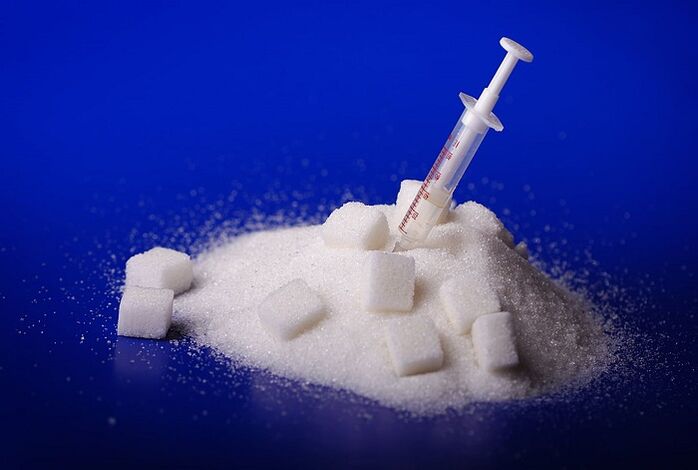
Diabetes brings many discomforts to sufferers, but by following a proper diet and continuously monitoring blood sugar levels, you can lead a fulfilling lifestyle.
The article gives basic recommendations on how to eat well in diabetes. Which diet is right for you? A qualified professional who knows the individual characteristics of your body will understand. He will follow a low-sugar diet, adherence to this diet will help fight the deadly disease.
Eat right with diabetes, harmonize the glycemic index of foods, pay attention to all important aspects.
Be healthy!






























